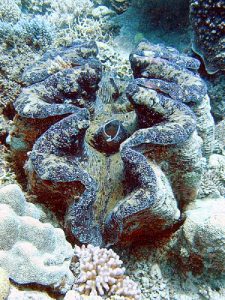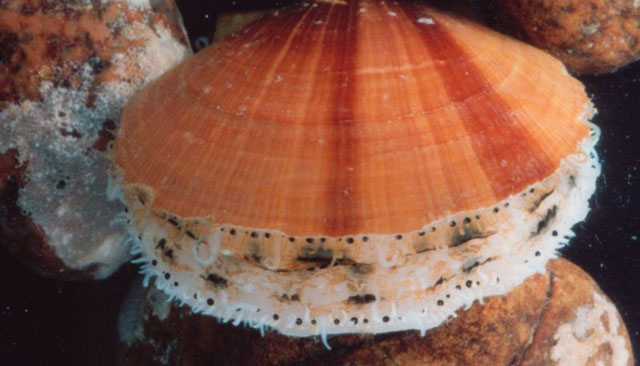Scallops: A Singular Seafood Sensation!
Scallops: A Singular Seafood Sensation!
There’s nothing quite like the taste of scallops. These sweet, delightfully chewy, juicy morsels from the sea are a sensation with most seafood lovers. They add a special, rich flavor to just about any pasta dish or salad, and they’re very versatile to use in recipes.
Even though you’ve probably enjoyed and eaten countless scallops over the years, there’s probably a lot you don’t know about this wondrous creature. What are they? Where do they come from? How do they live? ...We’ll try to answer these questions and more!
Yes... they’re animals!
In the sea, scallops are very much alive and are animals. If you ran across a brightly-colored scallop shell on the beach, you might have thought you’d come across an oyster shell. Not quite, although they are related. Scallops are a part of the creature category known as Phylum Mollusca, which contains a very diverse collection of organisms also known as ‘mollusks’. This group includes sea slugs, snails, octopuses (now you know the plural of octopus!), squid, and the group that are most familiar to lovers of seafood: mussels, oysters, and clams. Mollusks can live in salt water, fresh water, and on land.
With creatures like clams and octopuses that are such opposite ends of the spectrum, you can see how diverse this category is.
Bivalves have nothing to do with bicycle tires
Scallops are a part of the mollusk group of phylum known as ‘bivalves’, meaning they’re animals that have two hinged shells. These shells are called valves, and because there are two of them, they are ‘bi’.
Bivalves can be found in freshwater and saltwater habitats. When it comes to scallops and bivalves in general, they are under threat from ocean acidification, which impacts their ability to develop stronger outer shells.
With over 10,000 species of bivalves, their sizes run the gamut from tiny to gigantic; from less than a millimeter like the Condylonucula maya saltwater clam, to close to 5 feet for the giant clam, which can weigh almost 500 pounds.

Adult swim!
You might not believe it even if you saw it, but our scallop friends really know how to bust a move! They’re free-swimming and can move around on their own quickly, doing so by quickly clapping their shells (It’s almost like watching an underwater UFO!). This action causes a jet of water to move past their shells’ hinge which moves the scallop forward.
You can tell a scallop by the shell it wears

Scallop shells are easy to notice along the seashore if you find one. Scallop shells are fan-shaped shells and noticeable by the ridges or ribs on the surface. The bottom contains what are known as auricles or “ears”.
Here’s lookin’ at You!
The eyes have it when it comes to the scallop’s ability to see. That’s because not one, not two...but 60 teeny, weeny little round dots of eyes can catch anything (and we mean anything) at any time that might move around it. They can also recognize light, darkness and motion. The eyes can have a blue brilliance to them and look like they’re surrounded by multiple size eyelashes (just flash those baby blues!).
Scallops are very worldly.
You might say that scallops are everywhere. They can live in intertidal zones, which is the area where land meets sea and where habitats lie that get covered with water during high tide and exposed at low tide. They can also live in the deep blue sea, which is where they prefer because of the sandy floor.
Matters of size.
Depending on where a scallop is from, they can develop shells that are quite large with lengths up to about 9 inches, such as sea scallops from the Atlantic, or if they’re from the bay, they’re typically smaller and attain a size of about 4 inches.
It’s all muscle!
If you’ve ever wondered what you’re eating when you eat a scallop, you can rest assured it’s not some fatty piece of meat. It’s all muscle! That’s because the muscle is that fleshy, round “scallop”. The adductor muscle of the scallop is what controls the opening and closing of its shell, which makes it swim, and is the part we eat. Varying in color from white to beige, it could be more than 2 inches across as with an Atlantic sea scallop.
...It’s no wonder why scallops are one of the world’s most delectable seafood choices. All that plump, sweet, goodness rolled into just one round scallop just waiting to be grilled, sautéed, broiled or baked makes them one singular seafood sensation!